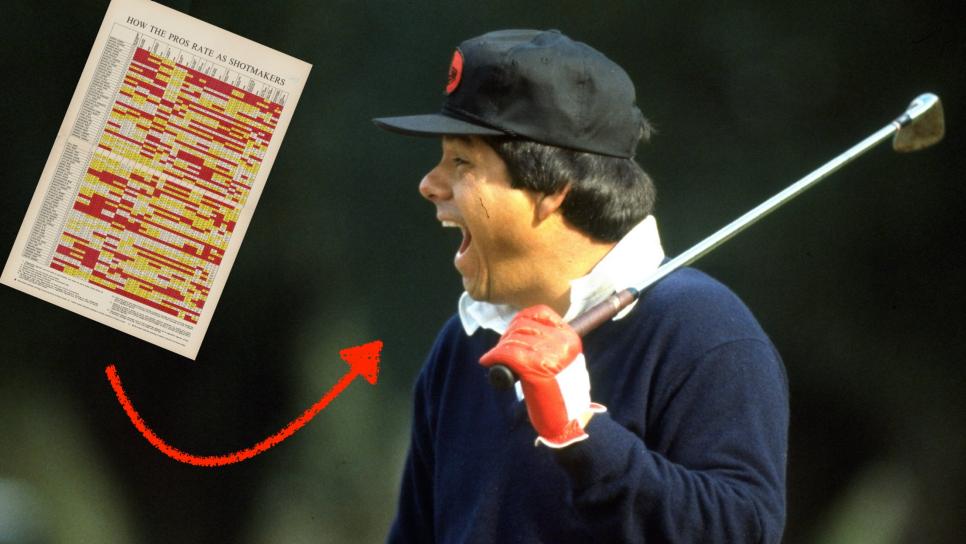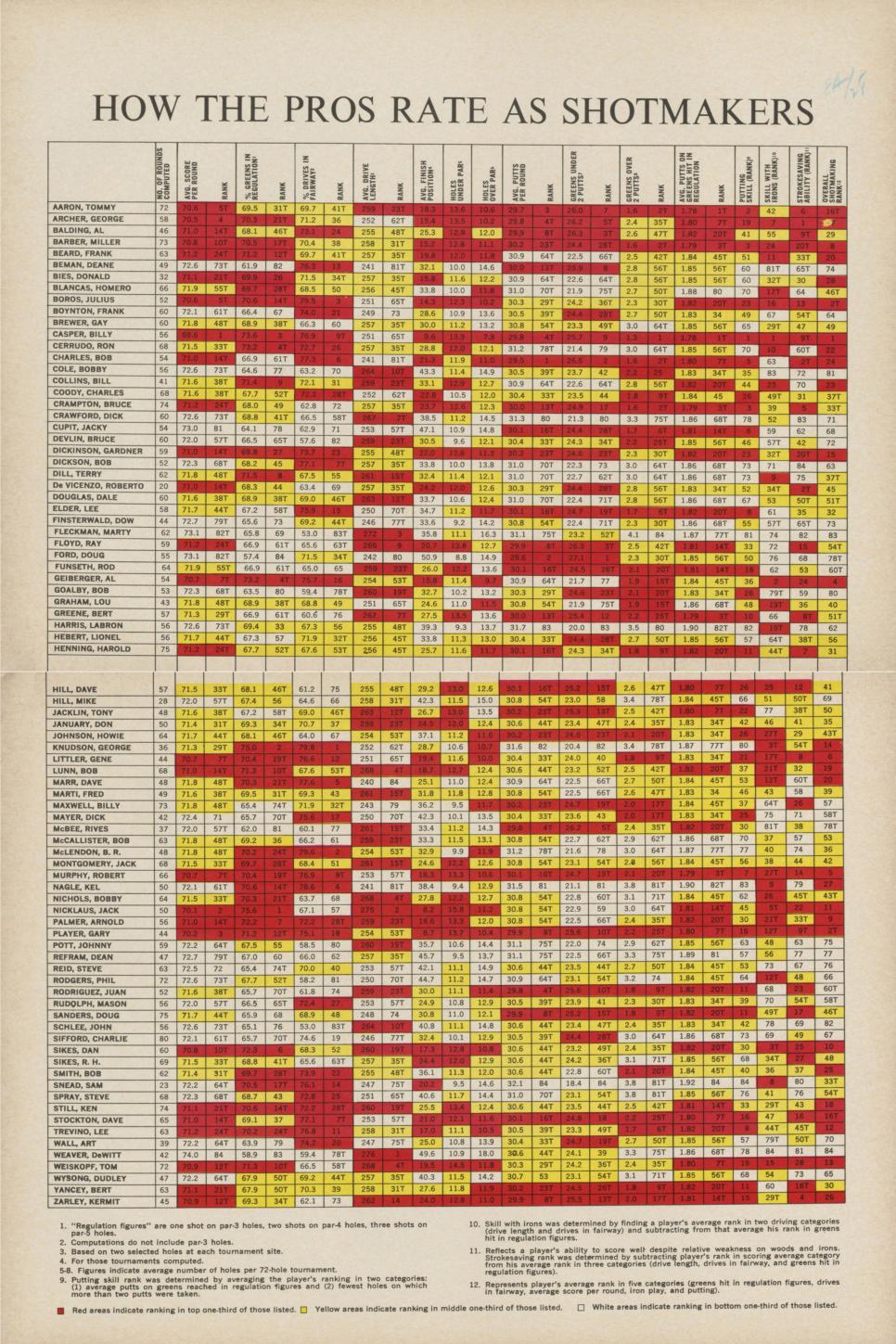Instruction
What these rare 1968 stats reveal about Lee Trevino's legendary ball-striking

Tony Duffy
At the PNC Championship late last year, I was in the small crowd that had assembled to hear Lee Trevino hold court on the driving range.
Between—and often during— the rapid-fire, bullet draws Trevino was sending into the distance, he was cracking one-liners, sharing swing tips, and telling stories from his time at the very top of the sport.
One in particular, stuck with me.
I can’t remember how (everything happens so fast during these Trevino sessions, you learn to just go wherever his stream of consciousness takes you), but he had meandered onto the winningest stretch of his career: The 13 months from June 1971 to July 1972, where Trevino won a U.S. Open and two Open Championships.
"I was never known as a great putter. But when I did putt good, you couldn't beat me. That's the string I had in 1971 when I won three Opens [U.S., British and Canadian]. The hole looked this big. My ball-striking was always the same," he said.
That streak in the 1970s marked the crescendo of Trevino’s peak, but it was a stretch of golf that started with his win at the 1968 U.S. Open at Oak Hill, where the PGA Championship is being played this week. It was his first career major, and established him as one of the best players in golf.
Coincidentally, 1968 was also the year Golf Digest started a first-of-its-kind, rather fascinating experiment. It paired with the technology powerhouse of the day, IBM, and "fed information on the performances of more than 225 players in over 22,700 rounds into a portable computer at 23 of the tour's 43 events."
The results generated a host of statistics we take for granted nowadays, but at the time marked the first step down that led to the ShotLink system used by the PGA Tour today.
(Golf Digest+ members can read the article in its original form, and the rest of our archive, right here)

With a major championship returning to Oak Hill, I thought now would be a good time to dive into this newly-unearthed data about Lee Trevino’s legendary ball striking.
How far did Lee Trevino drive the ball?
It seems like this is always the first question that pops up whenever we get a chance to quantify players of the past. It’s only natural, after all. It's the driving distance that gives us our frame of reference for evaluating previous generations of elite golfers.
So, how far did rising star Trevino hit the ball the year of his Oak Hill win? 257.1 yards, according to the data, which was above average for the 81 players measured and just one yard shy of landing inside the top 25 on tour. If he was coasting around the bottom half of the top third on tour, it probably means he hit the ball as far as a Matt Fizpatrick type, which anecdotally sounds about right.
Of course, it wasn't overwhelming distance that was Trevino’s strength …
Trevino was an incredibly well-rounded off the tee
The article notes that no player who ranked inside the top 25 on tour in driving distance also ranked inside the top 25 in driving accuracy, which makes Trevino's one yard number significant.
Trevino finished 11th in Driving Accuracy the year of his 1968 victory, which means he was just just one yard — technically 0.9 yards — from being the only player to finish on the top third on tour in both driving distance and accuracy. It’s the kind of feat that almost never happens. Generally, players are either long or straight. Trevino was both—the mark of a generationally good all-around ball striker.
And that ball striking prowess didn’t end once he got off the tee.
Trevino fired at lots of pins—and it worked
This one requires some interpretation of the data, but I’m pretty confident in my assessment here.
Trevino ranked 24th in Greens in Regulation. At first glance, that seems low for a player who is universally acknowledged as one of the best ball strikers ever. But once you look at his putting stats per GIR, they start making sense.
According to these stats, Trevino ranked inside the top 20 in putts per greens in regulation, 11th in birdie or better (called “holes under par” here), and sixth in three-putt avoidance (measured here as “greens over 2 putts per tournament).
These aren't the statistics of a man who was firing safely into the middle of the green.
Trevino was making lots of birdies and almost never three-putting. It means Trevino was probably aiming at lots of pins and actually pulling it off, leaving himself many birdie-range putts as a result. Putts that are easy to avoid three-putting, but aren’t ones you’re going to make routinely. He was hitting a lot of high-quality greens in regulation, basically. It’s exactly the kind of thing we use the Strokes Gained metric to measure nowadays. It’s not hard to believe Trevino would have fared very well in SG/Approach had it been around in 1968.
1 takeaway for the rest of us
As for what the rest of us can learn from Trevino’s numbers? The key to shooting lower scores is a steady diet of keeping your ball in play off the tee, hitting lots of greens, and having good enough speed control where you’re not three-putting a lot. Easier said than done, of course, but a good reminder that it’s safe and unspectacular ball striking that will win you the day. Something Lee Trevino knew—and mastered—far before we had any stats to prove it.
You can read the full article, and the rest of the Golf Digest archive, right here.